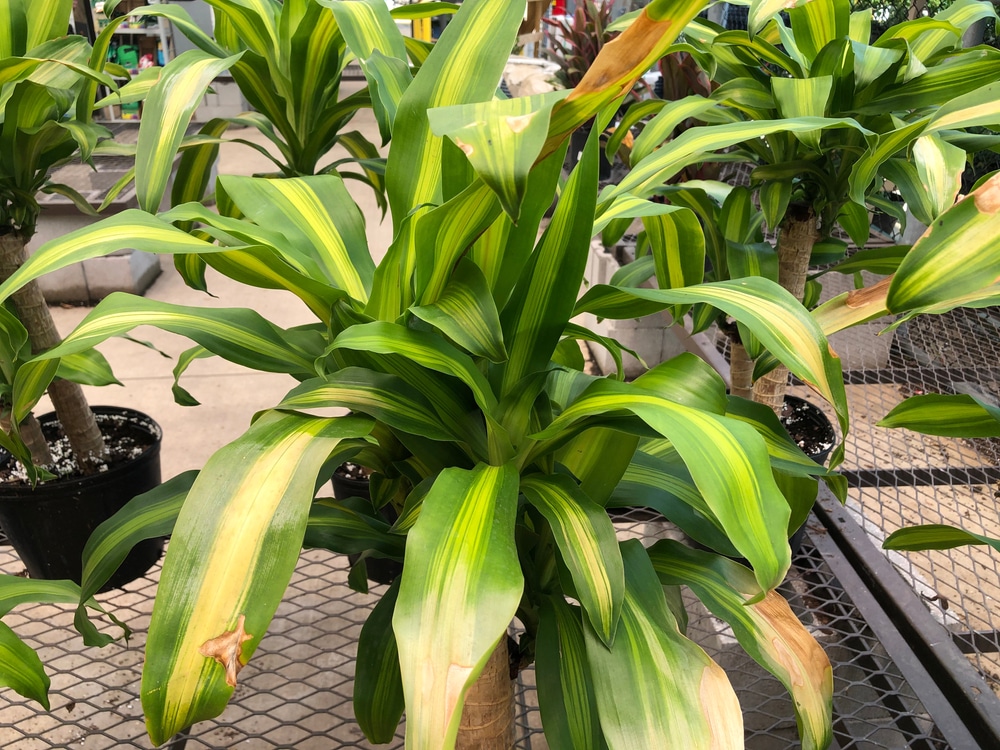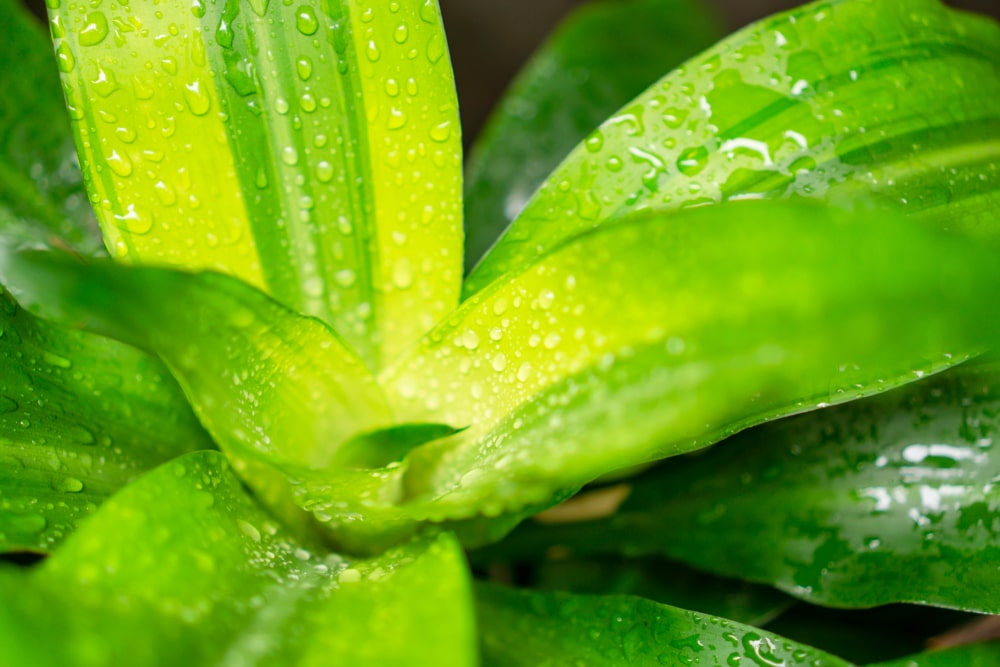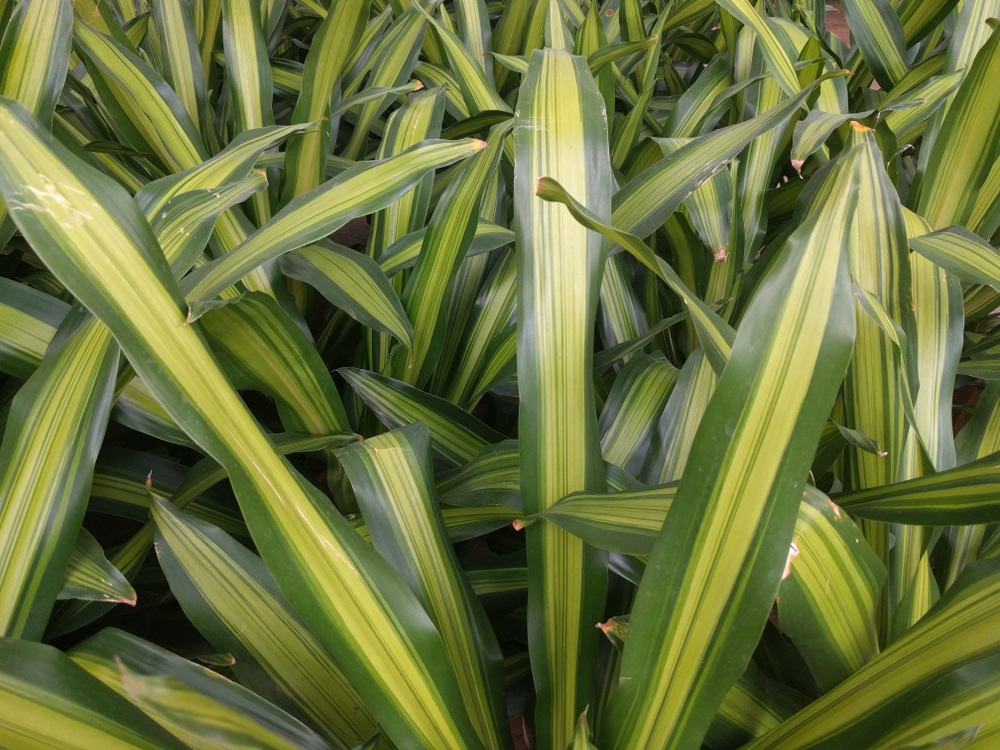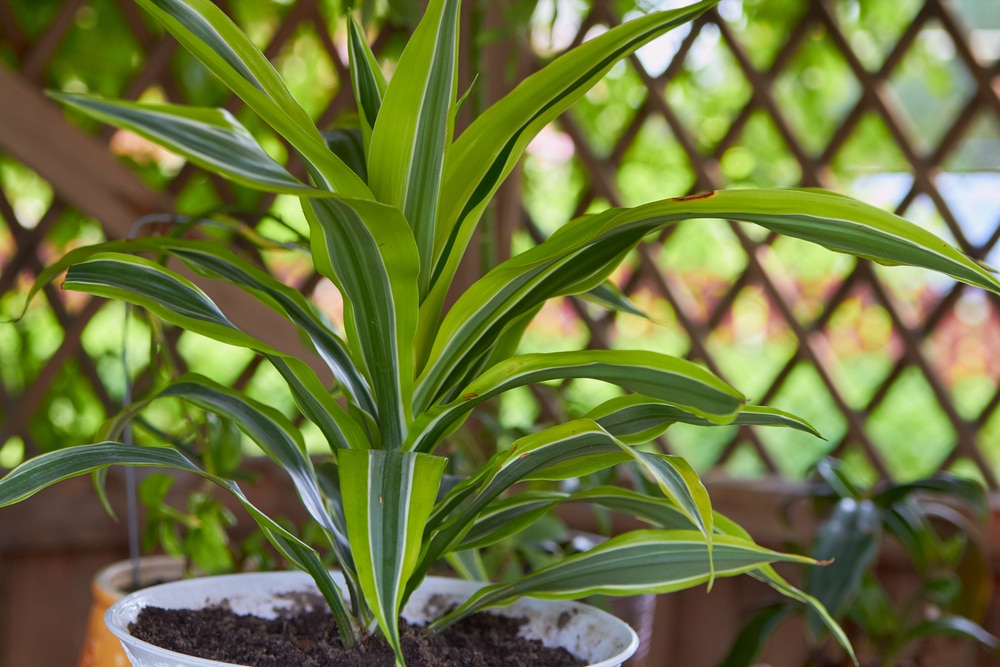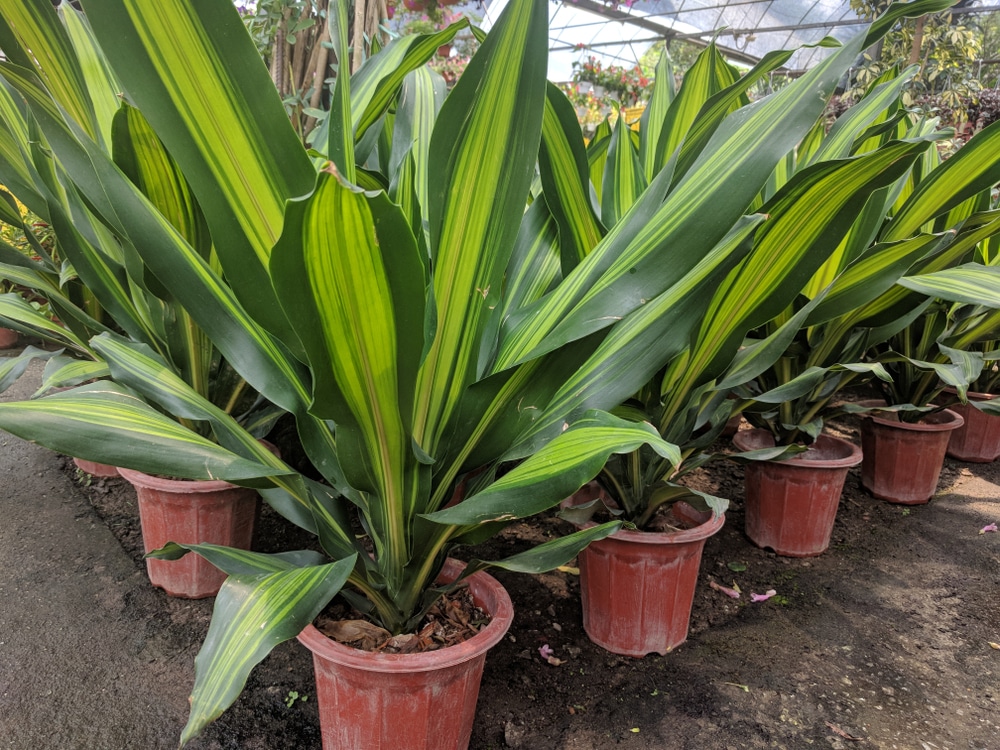
Mass Cane Plant Basic Overview
Appearance
The Mass Cane plant, also known as Dracaena fragrans, is a popular and unique houseplant. It is often referred to as a Corn plant due to the resemblance of its leaves to cornstalks.
This plant features tree-like “canes” or branches that shoot upwards, topped by tropical leaves with green and yellow streaks.’
It’s Very Adaptable
One of the reasons Mass Cane plants are so popular is their adaptability to various indoor light conditions. They can tolerate a wide range, but ideally, thrive in bright, indirect sunlight.
Moderate bright light, such as placing the plant on a porch or near an eastern-facing window, is best for healthy growth and appearance.
It’s a Great Choice for Almost Every Home
With proper care, the Mass Cane plant can be a fantastic addition to your home.
Its impressive growth and tropical appearance make it not only a beautiful statement piece but also a low-maintenance and versatile houseplant.
Basic Growth Requirements
Light Needs
Mass Cane plants thrive in bright, indirect light. Place the plant near a window with filtered sunlight, but avoid direct sun as it can scorch the leaves.
They can also tolerate lower light conditions, which makes them ideal for offices and homes with limited natural light.
However, growth may be slower in low light areas.
Water Needs
Water is an essential factor in Mass Cane plant care. These plants prefer to have their soil evenly moist but not soggy.
Water the plant thoroughly until the water drains out of the bottom of the pot, then let the top inch or so of the soil dry out before watering again.
Overwatering can cause root rot, while underwatering may lead to brown leaf tips. It’s important to strike a balance by providing consistent, measured waterings.
Soil Requirement
A well-draining potting mix is crucial for Mass Cane plants. A standard potting mix for houseplants can work, as long as the water runs freely through the soil.
To enhance drainage and add organic matter to the soil, consider mixing in peat moss.
The goal is to provide a soil environment where the plant’s roots are not sitting in water, as this can lead to root rot and other issues.
Growth and Propagation
Planting Method
To propagate Mass Cane plants, it’s best to do it in late spring or early summer.
Choose healthy and sturdy cuttings from your mother plant, and place them in a pot filled with well-draining soil mix.
Keep the soil consistently moist and placed in a spot with bright, indirect sunlight. The cuttings will eventually grow roots and thrive.
Blooming Cycle
Mass Cane plants typically bloom in their natural environment; however, this is a rare occurrence when kept indoors.
If your Mass Cane plant does bloom, it produces fragrant, small, white flowers in clusters. The flowering may sometimes be followed by small, yellow, or orange berries.
The blooming cycle of outdoor Mass Canes usually takes place in spring or early summer, depending on the climate.
Achieving Full Growth
Mass Cane plants grow relatively slowly and may take several years to reach their full height.
When provided proper care and optimal conditions, they can attain a height of 5 to 15 feet and a spread of 2 to 3 feet. Ensure proper water, light, and appropriate fertilizer application to aid in achieving full growth.
Where Can You Keep the Mass Cane Plant Outside All Year?
Mass Cane plants thrive in USDA hardiness zones 10B through 12, meaning they can be kept outside all year in these regions.
They prefer a location with bright, indirect sunlight. If temperatures drop below 55 degrees Fahrenheit (13 degrees Celsius), it’s best to move the plant indoors to protect it from cold damage.
Heat and Cold Tolerance
Mass Cane plants are native to tropical climates and are generally heat-tolerant. They can withstand high temperatures but prefer consistent and partially shaded light conditions.
However, they are not cold-hardy and should be protected from temperatures below 55 degrees Fahrenheit (13 degrees Celsius) to prevent damage to the plant.
So, it’s essential to provide the right temperature and light conditions to ensure your Mass Cane plant remains healthy and thriving year-round.
Care and Maintenance
Caring for a Mass Cane Plant is relatively simple, making it an excellent choice for beginners.
This African plant has straightforward requirements, and with a bit of attention, it will thrive indoors.
Pruning Instructions
Mass Cane Plants benefit from regular pruning to maintain their shape and health. To prune the plant, follow these steps:
- Remove any dead or yellowing leaves by cutting them off at their base, close to the main stem.
- Trim back any overly long leaves to maintain the desired length and appearance.
- If needed, prune taller canes to control the size of the plant. Make a clean cut just above a leaf node.
Remember to use clean, sharp pruning tools to prevent the spread of disease and ensure a clean cut.
Watering Schedule
Proper watering is crucial for Mass Cane Plants. Overwatering can lead to root rot, while underwatering can cause leaf tip browning. Follow these guidelines for watering a Mass Cane Plant:
- Allow the top 1-2 inches of soil to dry out between waterings.
- Water the plant thoroughly, allowing excess water to drain from the bottom of the pot.
- Avoid letting the plant sit in standing water to prevent root rot.
The watering frequency may change depending on the season and the plant’s location. Be sure to monitor the moisture levels in the soil and adjust your watering schedule accordingly.
Fertilization Technique
Mass Cane Plants benefit from regular fertilization to support their growth. Here’s what to consider when fertilizing your Mass Cane Plant:
- Use a balanced, liquid houseplant fertilizer diluted to half strength.
- Fertilize your plant once a month during the growing season (spring through summer).
- Avoid over-fertilization, which can lead to leaf burn and other issues.
By following these simple care and maintenance tips, your Mass Cane Plant will grow strong and healthy, adding a touch of tropical flair to your space.
Troubleshooting Common Problems
Managing Pests
Mass cane plants may occasionally attract pests like spider mites, mealybugs, and scale insects. To keep these pests at bay, regularly check the leaves and stems for any signs of infestation. If you spot any pests:
- Wipe the affected areas with a damp cloth or sponge to remove the pests physically.
- Use a mild soapy water solution, like insecticidal soap or neem oil, to spray the plant thoroughly, ensuring you cover all surfaces.
- Repeat the treatment every 7-10 days until the pests are gone. Remember to isolate the infected plant from other plants to prevent the pests from spreading.
Addressing Diseases
Mass cane plants are relatively disease-resistant, but they can still suffer from problems like root rot and leaf spot. To treat and prevent these diseases:
- Root rot: This typically occurs due to overwatering, leading to poor drainage and soggy soil. To avoid root rot, ensure the plant has well-draining soil and is watered only when the top inch of the soil is dry. If you suspect root rot, examine the roots and trim away any damaged or decayed areas. Repot the plant in fresh soil and a clean container with adequate drainage.
- Leaf spot: Fungal or bacterial infections may cause leaf spot in mass cane plants. To treat leaf spot, remove any affected leaves and spray the plant with a fungicide or bactericide suitable for houseplants. Ensure proper air circulation around the plant to discourage fungal growth.
Overcoming Growth Issues
Some common growth issues with mass cane plants can include yellowing leaves, brown leaf tips, and slowed growth. Here’s how to address them:
- Yellowing leaves: This may result from insufficient lighting or overwatering. Make sure the plant receives bright, indirect sunlight, and adjust your watering schedule, ensuring the soil dries out slightly between watering sessions.
- Brown leaf tips: These occur due to underwatering, low humidity, or exposure to fluoride from tap water. Maintain consistent watering and place a humidifier nearby or group the plant with other humidity-loving plants to increase humidity. Additionally, use filtered or distilled water to prevent fluoride damage.
- Slowed growth: Mass cane plants require regular fertilization during the growing season to maintain healthy growth. Fertilize the plant once a month with a liquid fertilizer containing equal ratios of nitrogen, phosphorus, and potassium (NPK 5-5-5 or 10-10-10) at half strength.
